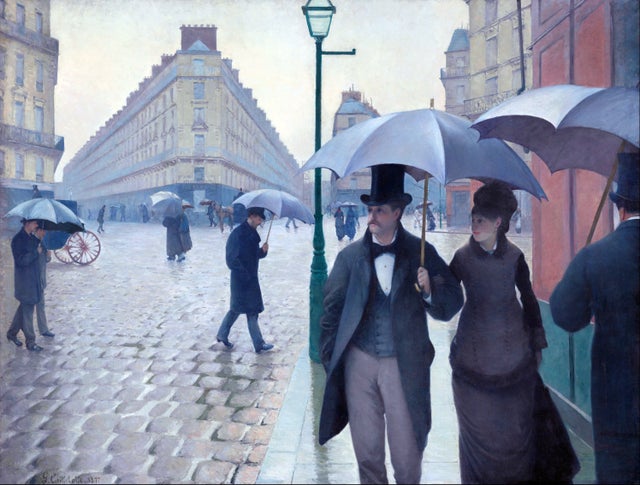- PRE-RAPHAELITES
- >
- Rainy Day in Paris
Rainy Day in Paris
Gustave Caillebotte was one of the leading figures of the French Impressionist movement, although he painted more realistically than other impressionists. He was born in 1848 into a wealthy upper-class Parisian family. Despite being a trained engineer, he took an interest in painting and began studying under painter Léon Bonnat and later entered the École des Beaux-Arts. In 1874, he befriended Impressionist painters Claude Monet and Pierre-Auguste Renoir, and gradually became acquainted with art outside of academic circles.
Caillebotte’s earliest masterpiece The Floor Scrapers (1875) is one of the first paintings depicting the urban working class. Although the painting demonstrated Caillebotte’s academic training, it was rejected by the Salon in 1875. The Jury, who was likely shocked by the crude realism of the painting, criticized the artist’s ‘vulgar’ choice of subject.


